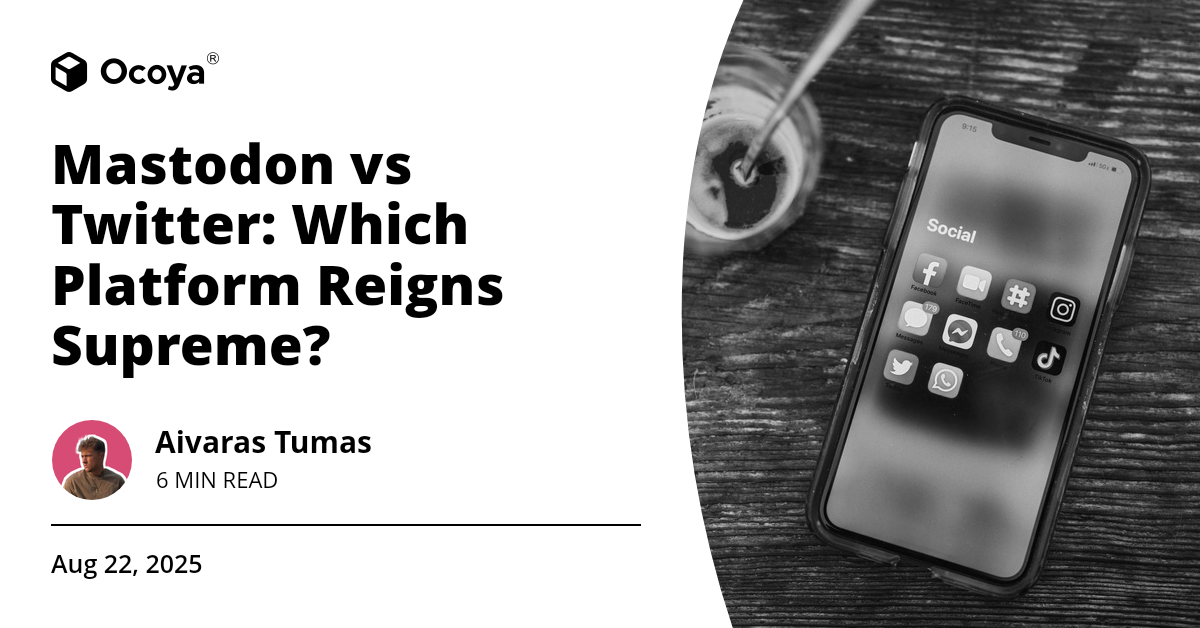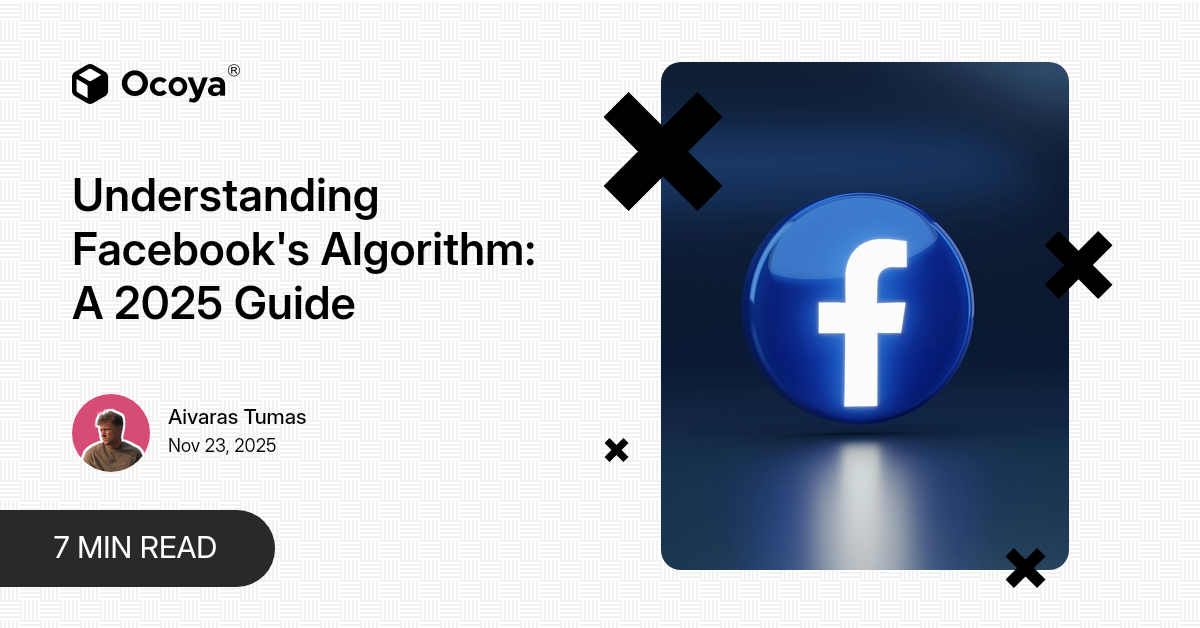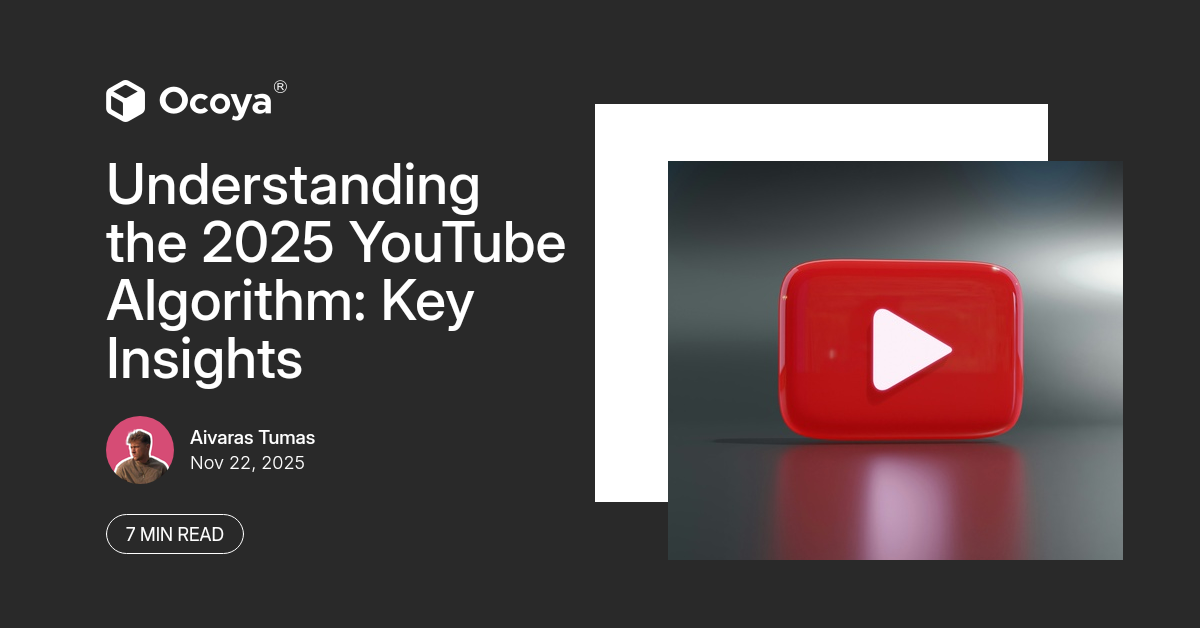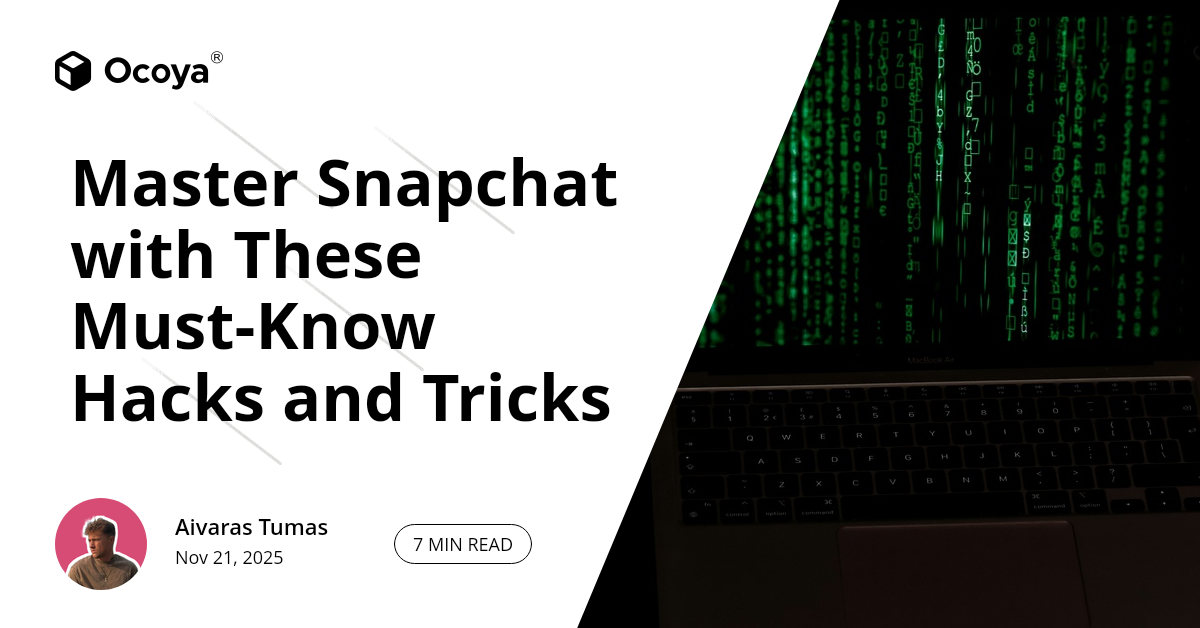
August 22, 2025
Marketing
Mastodon vs Twitter: Which Platform Reigns Supreme?

In today's ever-evolving digital landscape, social media platforms are more than just a way to connect with friends and family. They have become essential tools for brands, influencers, and everyday users to communicate, share content, and engage with a wider audience. Among the many platforms available, Mastodon and Twitter stand out as two significant players, each with its unique features and user experiences.
Understanding the differences between Mastodon and Twitter is crucial for anyone looking to maximize their social media strategies. In this comprehensive guide, we'll delve into the specifics of both platforms, examining their features, user experiences, and potential for growth. By the end of this article, you'll have a clearer understanding of which platform might be the best fit for your needs.
A Brief Overview of Mastodon
Mastodon is an open-source social network platform launched in 2016 by Eugen Rochko. Unlike traditional social media platforms, Mastodon operates as a decentralized network, meaning it is not owned by a single company or entity. Instead, it consists of multiple, independently operated servers or "instances" that can communicate with each other, creating a federated network.
The decentralized nature of Mastodon offers several advantages, including increased user control, enhanced privacy, and resilience against censorship. Users can choose an instance that aligns with their interests, values, or privacy preferences. This flexibility makes Mastodon an attractive option for those seeking a more tailored and user-centric social media experience.
A Brief Overview of Twitter
Twitter, on the other hand, is a well-established social media giant that launched in 2006. It operates as a centralized platform where all user data is stored on servers owned by Twitter, Inc. Known for its brevity, Twitter allows users to post short messages called "tweets," which can include text, images, videos, and links.
Over the years, Twitter has become a powerful tool for real-time communication, news dissemination, and public discourse. Its simplicity, combined with a massive user base, makes it a go-to platform for individuals, businesses, and public figures alike. However, as a centralized platform, Twitter has faced criticism regarding data privacy, censorship, and algorithmic biases.
Comparing Features: Mastodon vs Twitter
User Interface and Experience
When it comes to user interface and experience, Mastodon and Twitter have distinct approaches. Twitter's interface is sleek, minimalistic, and user-friendly, making it easy for new users to navigate. The platform's timeline is algorithmically curated, showing tweets based on user interests, interactions, and trending topics.
Mastodon's interface, while also user-friendly, offers a more customizable experience. Users can choose different instances, each with its own set of rules, moderation policies, and cultures. Mastodon's timeline is chronological rather than algorithmic, providing a straightforward, unfiltered view of posts. This chronological feed appeals to users who prefer a more transparent and less manipulated social media experience.
Content and Engagement
Twitter's restrictive character limit encourages concise and often witty posts, fostering a fast-paced and dynamic environment. The platform's emphasis on real-time updates makes it ideal for breaking news, live events, and instant reactions. Twitter also supports hashtags, mentions, and trends, allowing users to engage with broader conversations and discover new content.
Mastodon, with its more generous character limit, allows for more in-depth discussions and content sharing. The federated network structure encourages niche communities and meaningful interactions. While Mastodon supports similar engagement features like hashtags and mentions, the lack of a centralized trending system means that discovery relies more on community interactions and instance-specific trends.
Privacy and Security
Privacy and security are critical considerations for social media users. Twitter, as a centralized platform, has access to extensive user data, which it uses for targeted advertising and improving user experience. However, this centralization also makes Twitter a potential target for hacking and data breaches. Additionally, Twitter's content moderation policies have raised concerns about censorship and inconsistent enforcement.
Mastodon's decentralized structure enhances privacy and security by distributing data across multiple servers. Each instance operates independently, with its own data storage and moderation policies. This decentralization reduces the risk of large-scale data breaches and allows users to choose instances with privacy practices they trust. However, it also means that users must be vigilant in selecting instances with robust security measures.
Community and Culture
The community and culture of a social media platform significantly impact user experience. Twitter's vast user base includes a diverse range of individuals, brands, and public figures. This diversity fosters a vibrant and often contentious environment, where users can engage with various viewpoints and trends. However, the platform's sheer size and algorithmic curation can sometimes lead to echo chambers and polarizing content.
Mastodon's federated network encourages the formation of smaller, more specialized communities. Each instance develops its own culture, norms, and moderation practices, creating a more intimate and respectful environment. This community-driven approach allows users to find like-minded individuals and engage in meaningful discussions without the noise and hostility often found on larger platforms.
Monetization and Business Opportunities
For businesses and influencers, monetization and promotion are essential aspects of social media strategy. Twitter offers several monetization options, including sponsored tweets, promoted accounts, and Twitter Ads. The platform's analytics tools provide valuable insights into audience engagement and campaign performance, helping businesses refine their strategies.
Mastodon, being a decentralized platform, does not have a centralized advertising system like Twitter. However, this presents an opportunity for businesses to engage with niche communities in a more organic and authentic manner. By building relationships and providing value to specific instances, brands can foster loyalty and word-of-mouth promotion. Some instances may support donations or sponsorships to cover operational costs, allowing users to contribute directly to the platforms they value.
The Potential for Growth
The potential for growth is an important consideration when choosing a social media platform. Twitter's established user base and continuous innovation make it a formidable player in the social media landscape. The platform's acquisition by Elon Musk in 2022 and the introduction of new features such as Twitter Blue and Super Follows indicate a commitment to enhancing user experience and expanding monetization options.
Mastodon, while smaller in scale, has shown steady growth and adoption. Its decentralized, open-source nature allows for continuous development and customization by the community. As concerns about data privacy and platform control grow, Mastodon's unique model may attract more users seeking an alternative to traditional social media platforms. The success of Mastodon depends on its ability to balance community-driven innovation with scalability and usability.
Choosing the Right Platform for You
Ultimately, the choice between Mastodon and Twitter depends on your goals, preferences, and values. If you prioritize real-time updates, broad audience reach, and robust analytics, Twitter may be the better choice. Its established user base and comprehensive engagement tools make it ideal for businesses, influencers, and individuals looking to maximize their social media impact.
On the other hand, if you value privacy, customization, and meaningful community interactions, Mastodon offers a compelling alternative. Its decentralized structure and instance-based approach provide a unique and user-centric social media experience. Mastodon's potential for growth and innovation makes it an exciting platform for those seeking a more tailored and respectful online environment.
Enhancing Your Social Media Strategy with Ocoya
Regardless of your platform choice, managing social media campaigns effectively is crucial for success. This is where tools like Ocoya come into play. Ocoya is a comprehensive tool designed to streamline your social media marketing efforts with artificial intelligence. It offers a range of features, including automated content creation, scheduling posts across multiple platforms, and providing detailed analytics to track performance.
By leveraging Ocoya, you can efficiently manage your social media presence on both Mastodon and Twitter, ensuring your content reaches the right audience at the optimal time. Ocoya's user-friendly interface and advanced capabilities make it an ideal solution for businesses and individuals looking to enhance their online presence and engage more effectively with their audience.
Ready to take your social media strategy to the next level? Sign up for a free trial of Ocoya and discover how this powerful tool can help you achieve your social media goals.
Key Takeaways
Mastodon offers a decentralized and user-centric social media experience, ideal for those valuing privacy and community interactions.
Twitter provides a centralized platform with real-time updates and broad audience reach, suitable for those seeking extensive engagement and monetization opportunities.
Consider your goals and preferences when choosing between Mastodon and Twitter, as both platforms have unique advantages and challenges.
Enhance your social media strategy with tools like Ocoya, which can streamline your efforts and maximize your impact across platforms.

Continue Reading
The latest handpicked blog articles.



.svg)

.svg)







